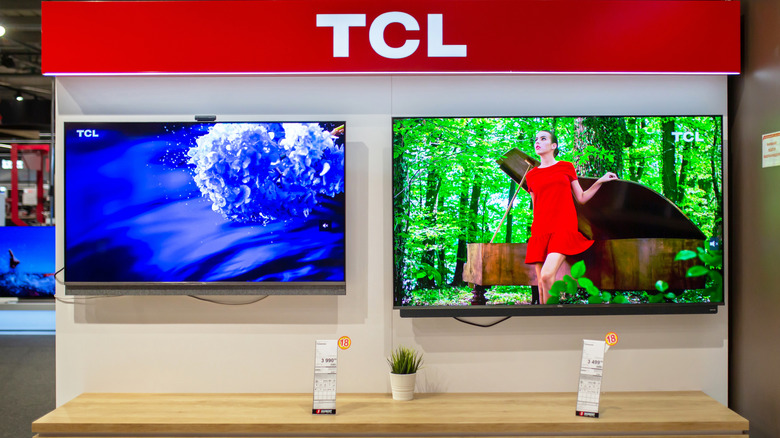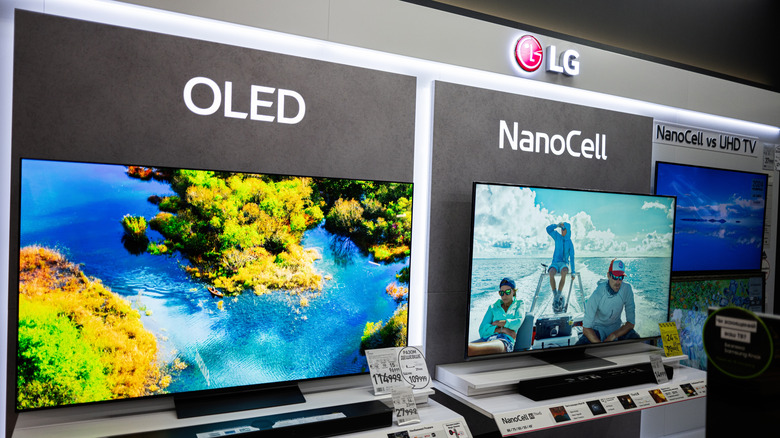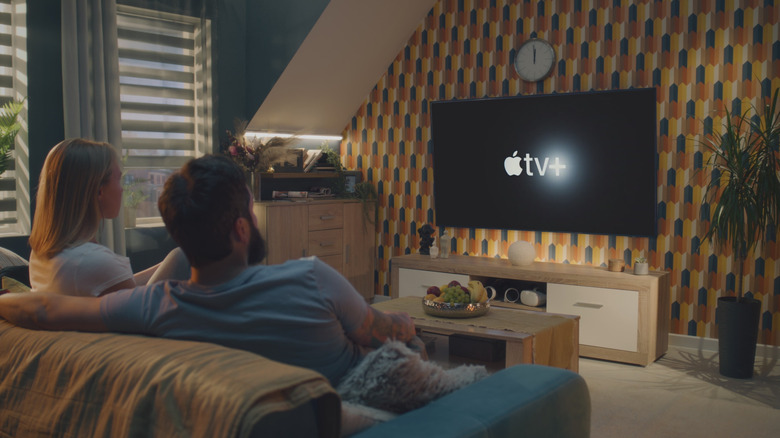Can You Really Tell The Difference Between Expensive And Cheap TVs?
Walk into any electronics store, and you'll see a wall of gleaming screens. Some TVs will cost a few hundreds of dollars, others well into the thousands. Yet, at first glance, many of them look surprisingly similar. After all, a 55-inch 4K TV is a 55-inch 4K TV, right? Not quite.
While cheaper TVs boast the same resolution numbers as their pricier counterparts, the experience they deliver can differ dramatically. That's because resolution is only one piece of the picture-quality puzzle. Factors like brightness, color accuracy, motion handling, and build quality all shape how lifelike your movies, games, and TV shows appear.
Marketing labels such as 4K, UHD, and HDR can make it seem like all modern TVs are roughly equal. However, the truth is, two screens with identical specs on paper can look and feel differently in person. The gap between "budget" and "premium" isn't always about luxury: It's about performance, longevity, and user experience. Understanding where that difference comes from can help you see beyond buzzwords and recognize what you're really paying for when buying your next TV.
What sets expensive and cheap TVs apart?
The most noticeable difference often comes down to the type and quality of the TV's panel. Premium TVs usually feature OLED or advanced QLED technology, which produces richer colors, deeper blacks, and superior contrast. Cheaper models rely on basic LED panels that can look flatter and struggle with fine color details, especially in darker scenes. For instance, do you remember the Battle of Winterfell in Season 8, Episode 3 of "Game of Thrones"? Most people don't, because we couldn't see it. LED panels are not bad, but they can't reproduce the same depth and realism that high-end panels can.
Brightness also plays a major role. Expensive TVs can reach higher peak brightness, which makes HDR content pop and helps maintain clarity in bright rooms. Budget models tend to appear dimmer, washing out subtle highlights or shadow details. Under the hood, processing power makes a surprising difference as well. High-end TVs come with powerful chips that enhance picture quality in real time. They help sharpen motion, reduce noise, and upscale lower-resolution content. Cheaper sets often skip these refinements, which can lead to blurring during the fast action scenes or graininess in older shows.
Build quality is another area where premium models stand apart. More expensive TVs tend to have slimmer bezels, sturdier frames, and higher-quality materials that not only look sleek, but also last longer. Budget models often use cheaper plastic that can bend and discolor over time. Then, there's sound quality: Premium TVs usually offer fuller, more balanced audio. Budget sets may sound tinny and fail to reproduce rich, bassy sounds.
Finding the best TV for your budget
A bigger price tag doesn't necessarily mean a better experience. It all depends on what matters the most to you. A top-tier OLED might look breathtaking in a dark home theater, but a well-reviewed, mid-range LED TV can still deliver impressive quality for everyday viewing. Many mid-price models now include features that were once reserved for premium TVs, like local dimming, wide color gamuts, and solid HDR performance. The sweet spot for value is now broader than ever.
You should think about where and how you would watch a TV before you decide which one to buy. A bright living room needs strong brightness and reflection handling. A dim den benefits more from deep contrast and rich blacks. Don't overlook the sound either: Adding an affordable soundbar can transform even a modest TV into a great setup.
Understanding which specs truly affect your viewing experience can save you hundreds of dollars in the long run without sacrificing enjoyment. The best TV isn't necessarily the priciest. It's the one that fits your space, your viewing habits, and your own eyes.


